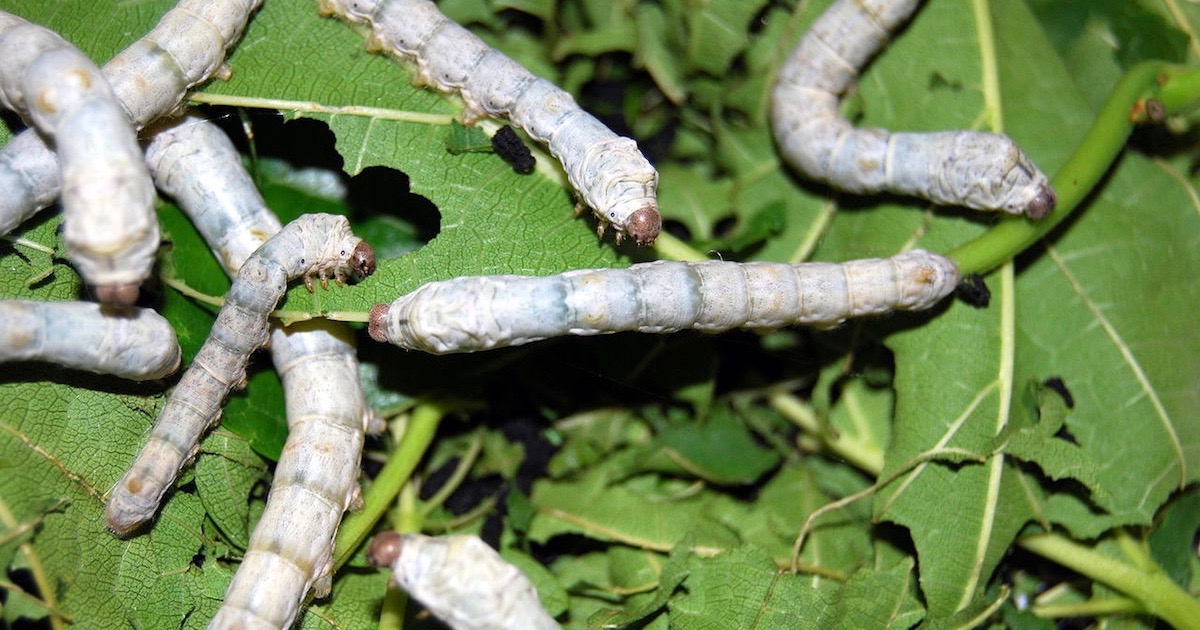 Evolution
Evolution
 Intelligent Design
Intelligent Design
Japanese Silkworm Researcher Takes on Michael Behe, Proposing “Reducible Complexity”


This arrived on our desk the other day: “On the Origin of Complex Adaptive Traits: Progress Since the Darwin Versus Mivart Debate,” a new paper by Takao K. Suzuki, writing in the Journal of Experimental Biology.
The author, a silkworm researcher in Japan, acknowledges major longstanding debates about evolution and offers “certain essential avenues for deciphering the origin of complex adaptive traits.” In that interesting context, he plays off Michael Behe, arguing that “the evolution of complex traits could be understood within the concept of ’reducible complexity.’”
[St. George Jackson] Mivart assumed that complex phenotypic structures have evolved while maintaining their overall integrity to execute the same function that they presently perform (Mivart, 1871). Later, this assumption was often invoked, referring to the concept of “irreducible complexity,” which stated that complex systems cannot be reduced into an assembly of subsystems (Behe, ’96). Irreducible complexity assumes that conservation of the tight integration of subcomponents through the evolution of complex traits is required to perform functions sufficiently. In other words, it assumes that the intermediate states of complex traits do not adequately perform advantageous functions (Fig. 5A). According to this assumption, Behe said, “If adding individual pieces does not continuously improve the function of a system, then multiple pieces have to be added together.” Thus, this assumption suggests that simultaneous changes in subcomponents are needed to evolve complex systems, finally linking to the argument of their sudden evolution (Fig. 5B). Is it a true story? When we look back to the recent findings on Mivart’s examples, the concept of irreducible complexity was criticized by several lines of evidence. First, complex traits such as leaf mimicry in butterfly wings and camera-like eyes in animals are formed from an assembly of subcomponents that can be identified across numerous species. Second, the intermediate versions of traits, which are composed of different combinations of the subcomponents, can perform functions sufficiently well so that organisms having the traits can survive (Fig. 4).
Criticisms aside, papers such as this are tremendously encouraging. One of the first lessons learned by a student of the philosophy of science, via Thomas Kuhn in particular, is that scientists expend considerable effort only on the puzzles that MATTER to them. (There’s a strong parallel to this “work on what matters” principle in art and other fields, which we won’t explore here.) As you see, Dr. Suzuki borrows Dr. Behe’s term “irreducible complexity,” cites Behe, and then adapts Behe’s term, arguing that unsolved problems in macroevolution, namely, the “evolutionary origin of complex adaptive traits,” can perhaps be solved by “reducible complexity.”
Kuhn explains that as the normal problem-solving approaches within a theory (or paradigm) break down, a special type of phenomena comes to the fore. He calls these phenomena “the recognized anomalies whose characteristic feature is their stubborn refusal to be assimilated to existing paradigms. This type alone gives rise to new theories.” Indeed, Suzuki opens his paper by noting that “how complex adaptive traits evolve has been a contentious subject in the history of evolutionary biology since the time of Darwin and Wallace.” That’s 150 plus years of “stubborn refusal to be assimilated.”
Of course, the details of Suzuki’s counterproposal can and should be evaluated. What’s noteworthy is this: his project is largely motivated by trying to answer Mike Behe, and the perspective of intelligent design.
We pointed out the paper to Behe himself. Mike’s reaction? His typical smiling-twinkle-in-the-Irish-eye: “The fact that he cites one of us is probably the reason he didn’t get published in Nature or Science.”
By the way, for quite a few years we’ve been keeping informal track of citations of Behe and “irreducible complexity” in the scientific literature. By our count, the figure totals more than 125 instances where Behe’s ID work has been cited, by critics or supporters, in the peer-reviewed and/or mainstream scientific literature. Over 50 of cases are from research papers in mainstream, non-ID scientific journals.
That is science as ordinarily done. Let our noisy, name-calling, mostly substance-free critics fuss, let Bill Nye fume, etc. — who cares. Give us the quiet Japanese researcher beavering away on a hard scientific problem. We want to see whom he cites, and why.
Photo: Silkworm larvae, by Fastily [CC BY-SA 3.0 or GFDL], via Wikimedia Commons.
